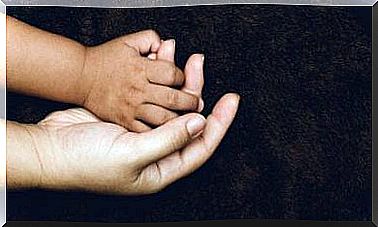Fibromyalgia, More Than Physical Pain

Does he have fibromyalgia? Antonia is a 52 year old woman. He lives his life without major restrictions: he works in the inn’s garden and takes care of his own home.
She is a nice person, she always talks to her friends and neighbors with a smile. He almost never chooses because he has to move forward no matter how he feels.
But only he knows the sacrifice he makes every day to live a seemingly normal life. He feels pain in certain areas of his body and everywhere. She has a hard time getting up in the morning because she doesn’t sleep well at night.
Sometimes he has so much pain that he can’t do the dishes completely. He leaves them dirty to take care of them later. Other times he feels like he has a knife on his back… Does he have fibromyalgia?
People like Antonia who are constantly in pain for no apparent reason may have fibromyalgia. Usually, fibromyalgia is difficult to understand because the symptoms are not always visible.
It may seem that people come up with the pain themselves or complain for no reason, making excuses not to do the things they should be doing. But that is not true. Their pain is real and they suffer.
What is fibromyalgia?
On the other hand, fibromyalgia has generally been described as chronic pain in muscles and connective tissues (ligaments and tendons). So it means musculature and bones.
On the other hand, it can also be defined as hypersensitivity to pain. When it comes to a pain-producing stimulus, the brain sends signals as if there is more pain than what that stimulus would normally produce. Even if there is no longer a stimulus that produces pain, the pain can continue.
It is more than a change in the musculature. Studies show that it is a change in the central nervous system, the brain.
This may be due to a lack of pain-relieving activity in the body (lack of internal opiates) and changes in central nervous system drugs (less serotonin, norepinephrine and dopamine).
In addition to pain, there are usually other symptoms such as fatigue, sleep disturbances, tingling in the limbs, difficulty concentrating, and sometimes emotional symptoms such as depression or anxiety.

Fibromyalgia syndrome is really hard to describe. In fact, no specific biological or psychological cause has been determined to explain the pain. But fortunately, the disease was recognized by the World Health Organization (WHO) in 1992.
The criteria used to diagnose fibromyalgia are such that general pain occurs at eleven (thirteen) sensitive points in the body (especially the neck, back, and joints such as elbows and knees) for more than 3 consecutive months. Apart from this, there is no other clinical definition to explain the pain.
The pain thus ignored was acknowledged and sounded. This definition was a very important first step for people with fibromyalgia so that they could feel less lonely and cope better with the disease.
Is fibromyalgia a chronic pain?
Antonia, like many other people, did not know what caused her long-term pain. He visited several doctors in an attempt to find cause and relief from his trouble. For a long time, he felt hopeless until he was diagnosed with fibromyalgia.
But this was not the end of the matter. It was very difficult for him to accept that his pain was chronic and would be present for the rest of his life.
Unfortunately, there is no single drug to relieve the pain caused by fibromyalgia. An anti-inflammatory drug used too often is not effective because it does not relieve pain. The medication relieves it, but it reappears later.
It is important to note that fibromyalgia is not a degenerative disease. It does not destroy joints or cause irreversible injury or deformity. This dispels the myth that the disease leads to serious mobility problems or even a wheelchair.
Although there is no specific cause or medication for fibromyalgia, there are ways to get a better quality of life. A person who suffers from it can learn to take care of themselves so that the pain does not get worse. The idea is to keep the pain at the same level or even reduce it. Change is possible.
Is it better to stay active or rest?
People with fibromyalgia normally feel the need to be very active and not rest much. Even to the point that they are extremely exhausted, at which point they must eventually be motionless for hours or even days after their pain is incited too badly.
It is not better to be constantly on the move nor to rest constantly. It is important to find a balance that varies from person to person. People with fibromyalgia need to learn to regulate the rhythm of their activity and rest.
To regulate the rhythm of their activity and rest, we first recommend that they observe and listen to their bodies. Pain should not be allowed to rise to extremes (level 10 on a scale of 0-10).
They need to get to know when their pain rises to level 5 and allow themselves to rest. This prevents pain and fatigue from rising to a critical level, allowing them to do nothing and have to stop completely.
It should be noted that although most of the time goes to rest, it is recommended to exercise reasonably vigorously at least once a day.
Rest and activity
We want to prevent the problems caused by immobility. Immobility can exacerbate pain, fatigue, and stiffness; not only physically but also psychologically.

Resting more so that the pain does not rise to the extreme means lowering expectations. This means not trying to do too much work in one day. Goals are set at a reasonable level or large tasks are divided into smaller, more manageable parts.
It’s also good to learn to be more flexible and less demanding of yourself. For example, if you have a day when you can’t do everything you’ve planned because of too much pain, don’t torture or punish yourself. You just feel worse.
Can psychological treatment help with pain?
Better regulation of social relationships and emotions has been shown to help alleviate physical pain. In this way, psychotherapy helps people with fibromyalgia to live better lives and see progress on things like:
- Accepting and living with pain.
- Balancing emotions.
- Improving sleep quality.
- Improving relationships, especially with the family (who experience the effects of suffering from fibromyalgia).
People with fibromyalgia usually (not all, there are many outings) help others more than themselves. They need to learn to say “no”.
Obviously, helping others is a good thing, but it should be limited to not neglecting themselves.
In this way, psychological care can focus on, among other things, learning to take care of oneself and self-respect. This goal means the ability to say “no” in certain circumstances and treat others more rigidly.
As is often the case, it is easier said than done. People sometimes know that resting would help them better. The problem is that people with fibromyalgia are usually not used to resting and feel guilty about it.
They feel the need to stay within their “responsibilities”. Therefore, they need to learn to spend time with themselves without burning a bad conscience about it.
Fibromyalgia and identity
While rest seems to have a simple purpose for people with fibromyalgia, rest calls their identity into question. They may feel less valuable.
According to research based on the principles of George Kelly’s “Theory of Personal Constructions,” several “constructions” (descriptions) related to these “dilemmas” (obstacles) have been found that prevent a person from making the changes he or she needs. For example, generous vs. selfish “constructions”.
People with fibromyalgia normally see themselves as hard-working and generous people, and unconsciously feel that if they neglect their actions and “duties,” they will cease to be hard-working and generous.
They feel weak and selfish. Therefore, one of the goals of psychotherapy is to help them understand that resting or asking for help does not mean that they will cease to be themselves.

What else could they do to take care of themselves?
The pain associated with fibromyalgia appears to be uncontrollable and unpredictable. As if nothing would help it. According to the “gate control theory” of pain, certain situations can “open” or “close” flood gates.
For example, it has been found that many people with fibromyalgia feel less pain when they are more relaxed and their attention is elsewhere, with friends and family.
On the other hand, things that increase pain are: feeling nervous, stressed, overwhelmed, or anxious. For example, after work, excessive exercise, or controversy.
When they become aware that these situations affect their pain, the next step would be to reduce what makes the pain worse and increase what reduces it.
It’s easier said than done for people who have spent their lives on sacrifices that torture them far more than the disease itself.









